Perfect Poached Eggs
This post may contain affiliate links. Read my full disclosure policy.
Unlock the secret to perfectly poached eggs: tender, beautifully runny, and impeccably shaped—no messy edges, just perfection for every brunch occasion!
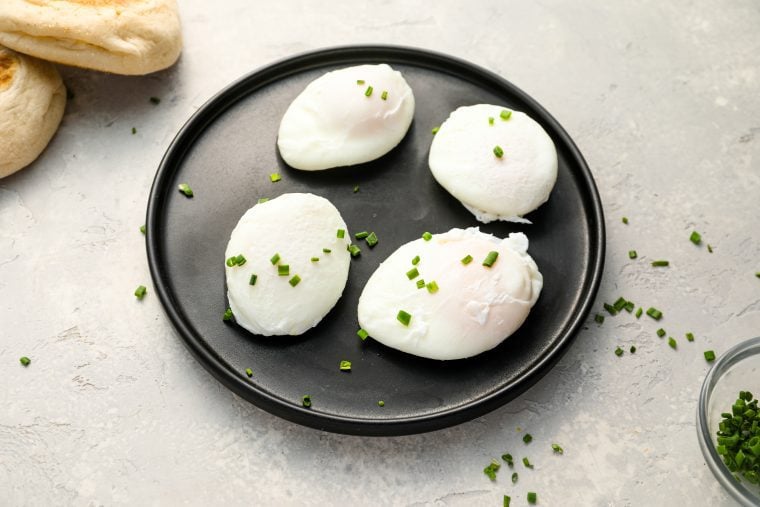
Have you ever tried to poach eggs only to end up with something that looked more like a failed science experiment than breakfast? You’re not alone. Achieving poached eggs that look as good as they taste can be tricky, but with this simple and foolproof technique, you’ll be able to create tender, beautifully runny poached eggs that are perfectly oval, without any messy edges. The key is straining the eggs before cooking and adding a touch of vinegar to the poaching water.
Poached eggs can take any dish up a notch—whether part of classic eggs Benedict topped with hollandaise sauce, topping a salad with protein, or simply serving over toast with crispy bacon. Plus, you can make them ahead and quickly reheat before serving, making your brunch stress-free!
Table of Contents
What You’ll Need To Make Poached Eggs
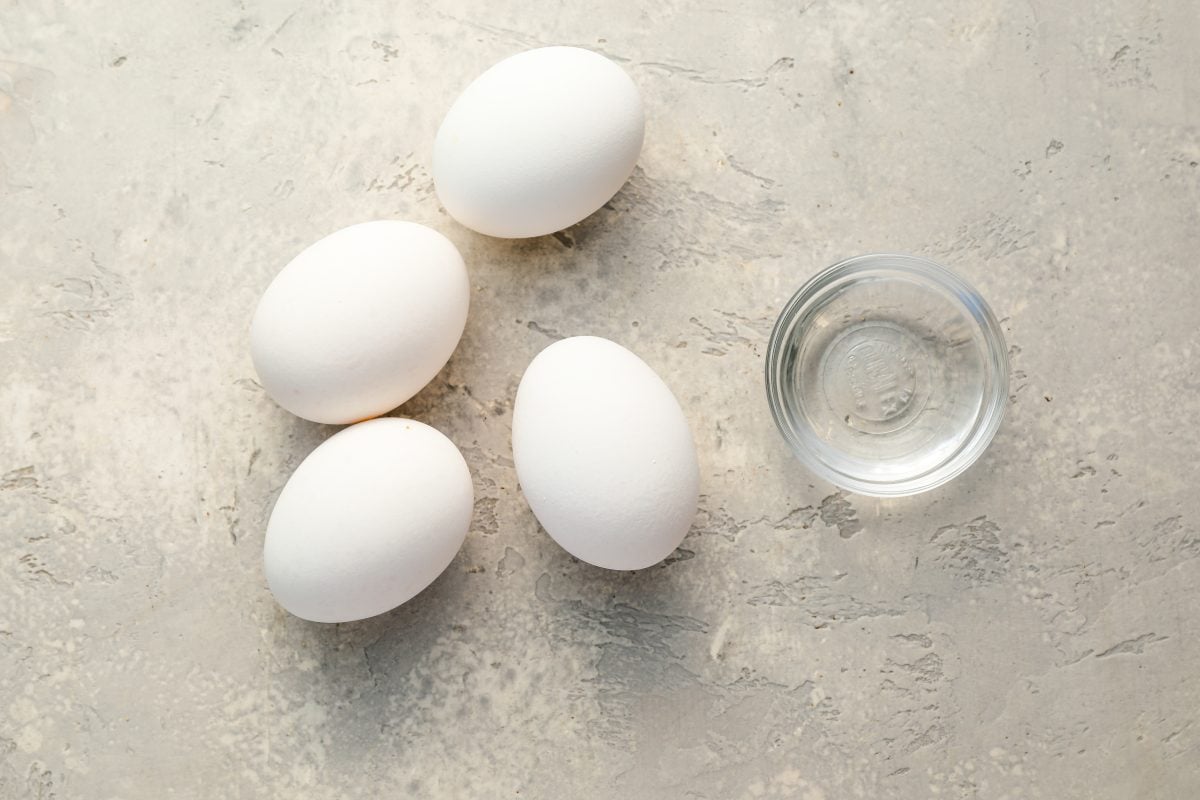
You only need two ingredients to poach eggs: eggs and vinegar. The vinegar helps coagulate the egg whites, ensuring they hold together during poaching.
Step-By-Step Instructions
Bring 6 cups of water and 1 tablespoon of vinegar to a gentle simmer in a large saucepan. Optionally, for neater eggs, first crack each egg into a fine mesh sieve over a bowl, allowing the watery part of the white to drain for about 30 seconds.
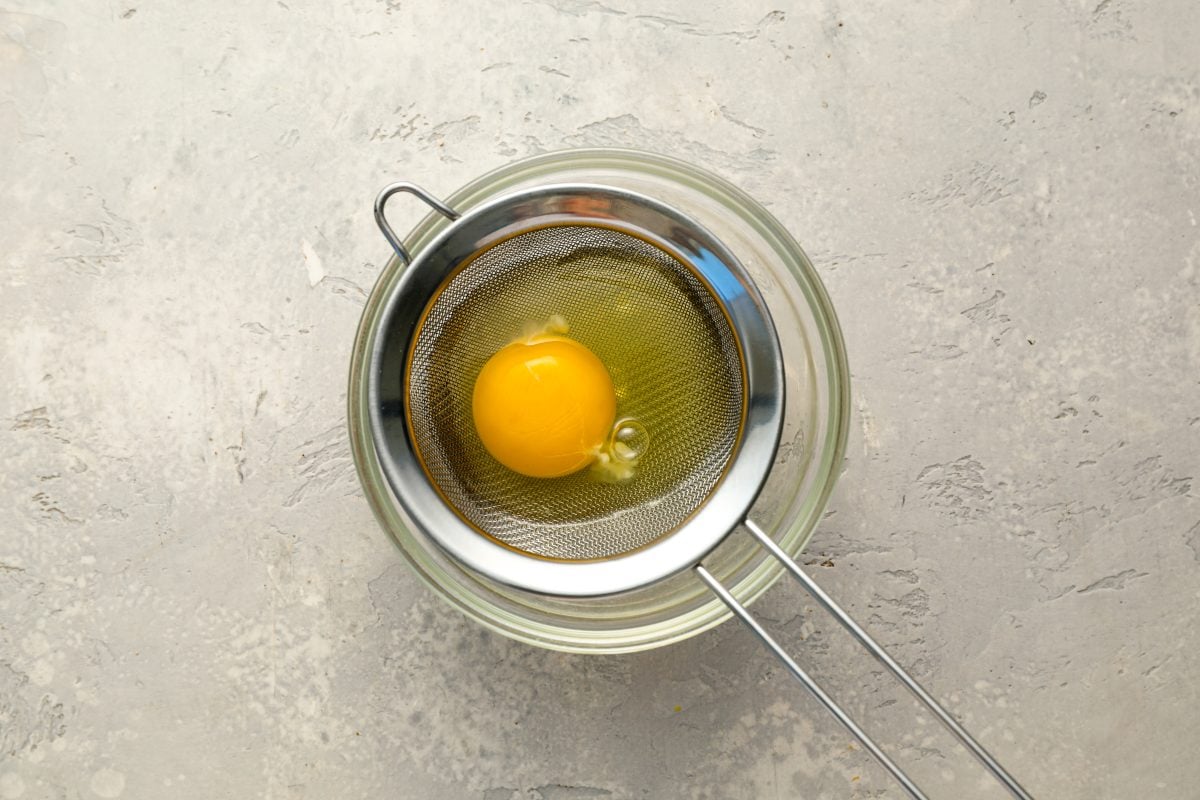
Regardless of whether or not you strain the eggs, gently transfer each egg into a small cup or ramekin. Repeat with the remaining eggs.
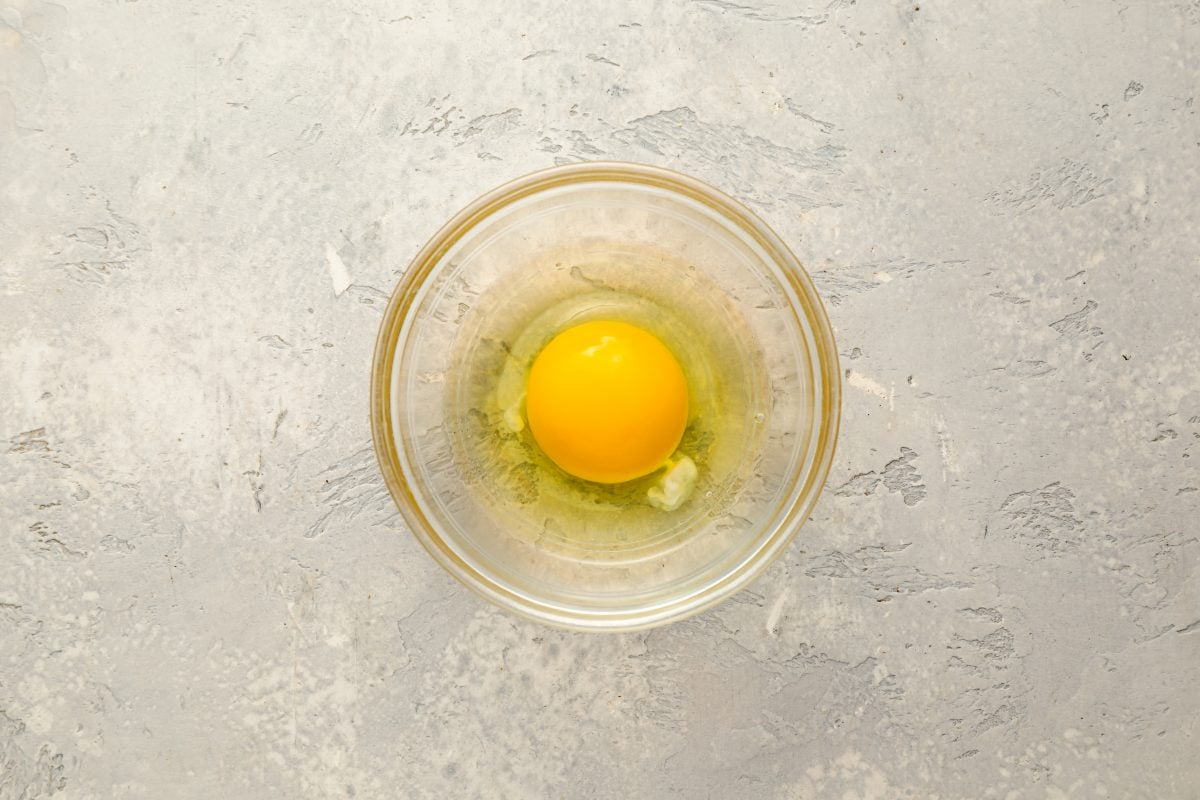
Carefully slide the eggs from the cups/ramekins into the simmering water. Cook for 3 to 4 minutes until the whites are set but yolks are still runny.
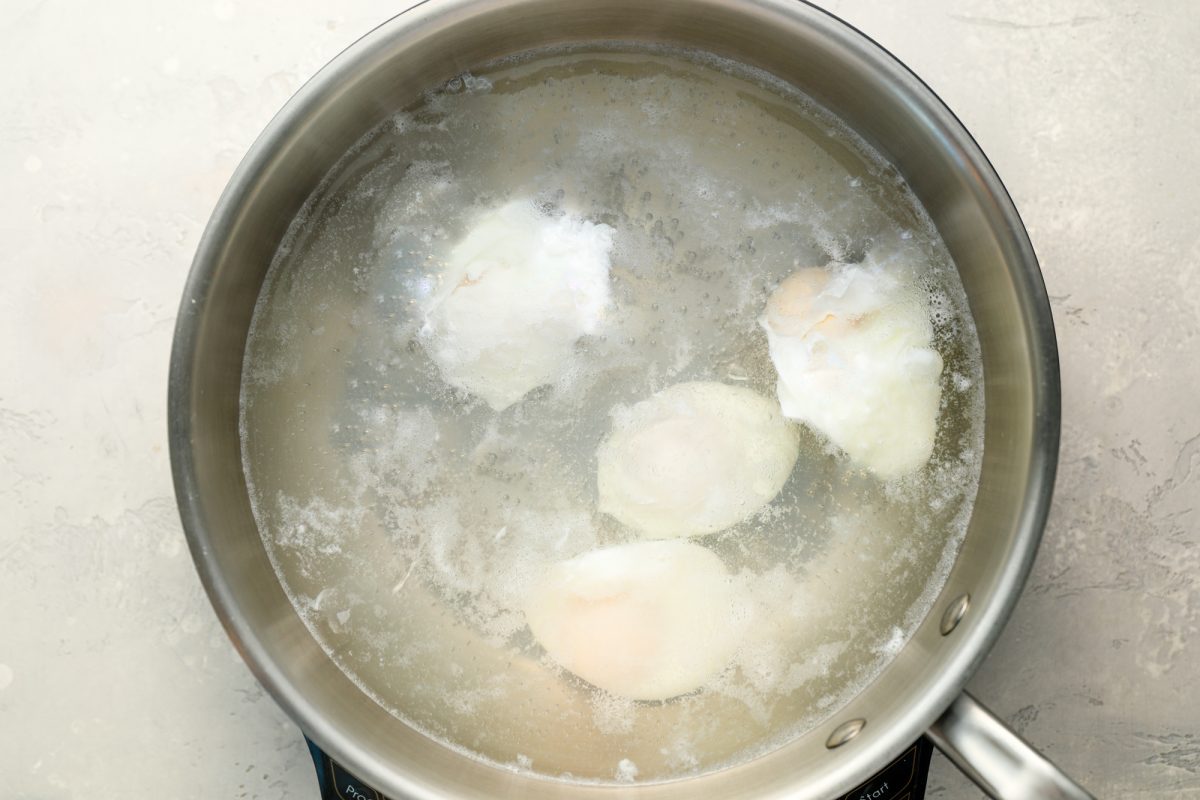
Use a slotted spoon to transfer them to a paper towel-lined plate to drain.
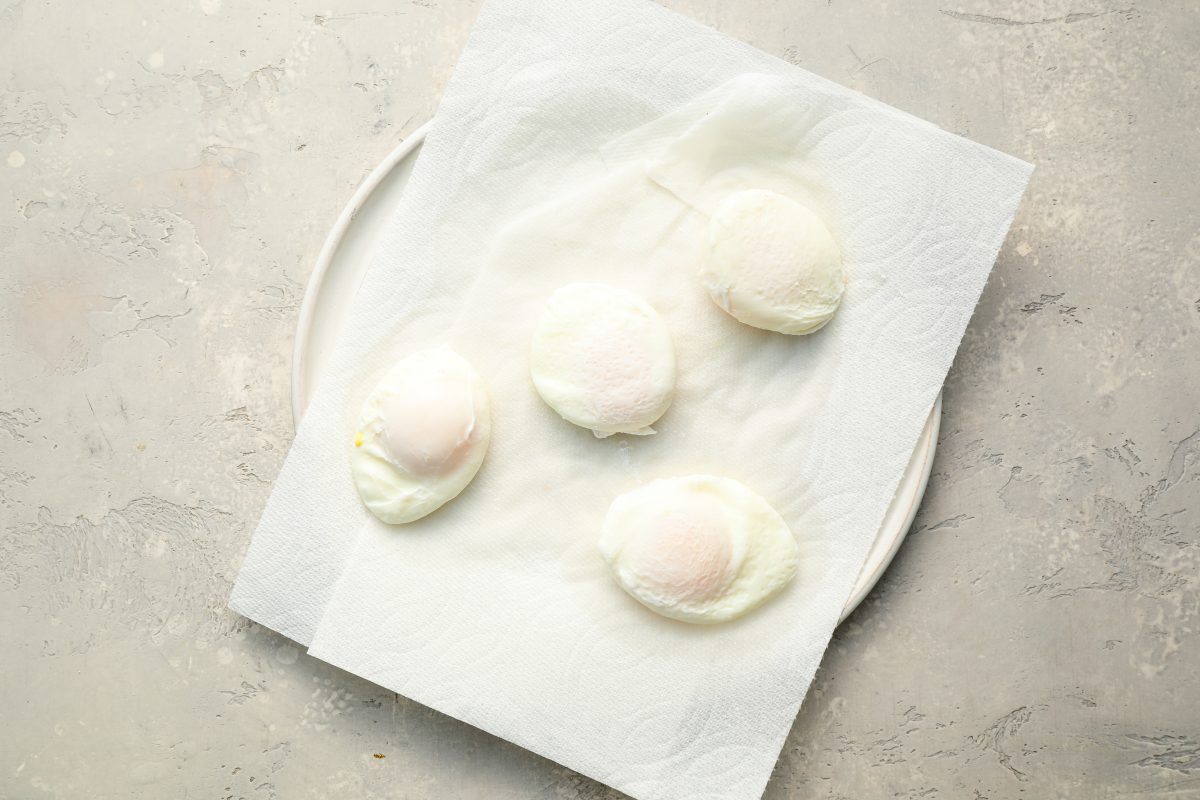
Season the eggs with salt and pepper to taste, and serve them immediately on toast, as part of eggs Benedict, or with your preferred dish.

Video Tutorial
Frequently Asked Questions
I suggest sticking with distilled white vinegar due to its neutral flavor.
Fresh eggs are ideal for poaching because they have firmer whites that hold together better in the water. However, if your eggs are slightly older, the added vinegar can help compensate.
Nope! The vinegar is just there to help the egg whites coagulate and won’t overpower the flavor of the eggs. Just be sure to stick to 1 tablespoon.
Sure! Immediately after poaching the eggs, transfer them to a bowl of ice water. (This stops the cooking process instantly and helps preserve their delicate texture.) Once cooled, store the poached eggs in the ice water in the fridge, covered, for up to 24 hours. When ready to serve, reheat by bringing a pan of water to a gentle simmer—do not let it boil as high heat can cause the eggs to become rubbery. Using a slotted spoon, place the poached eggs in the simmering water for 30 seconds to 1 minute, just until they are warmed through. Carefully remove the eggs with the spoon, drain briefly on a paper towel-lined plate, and serve.
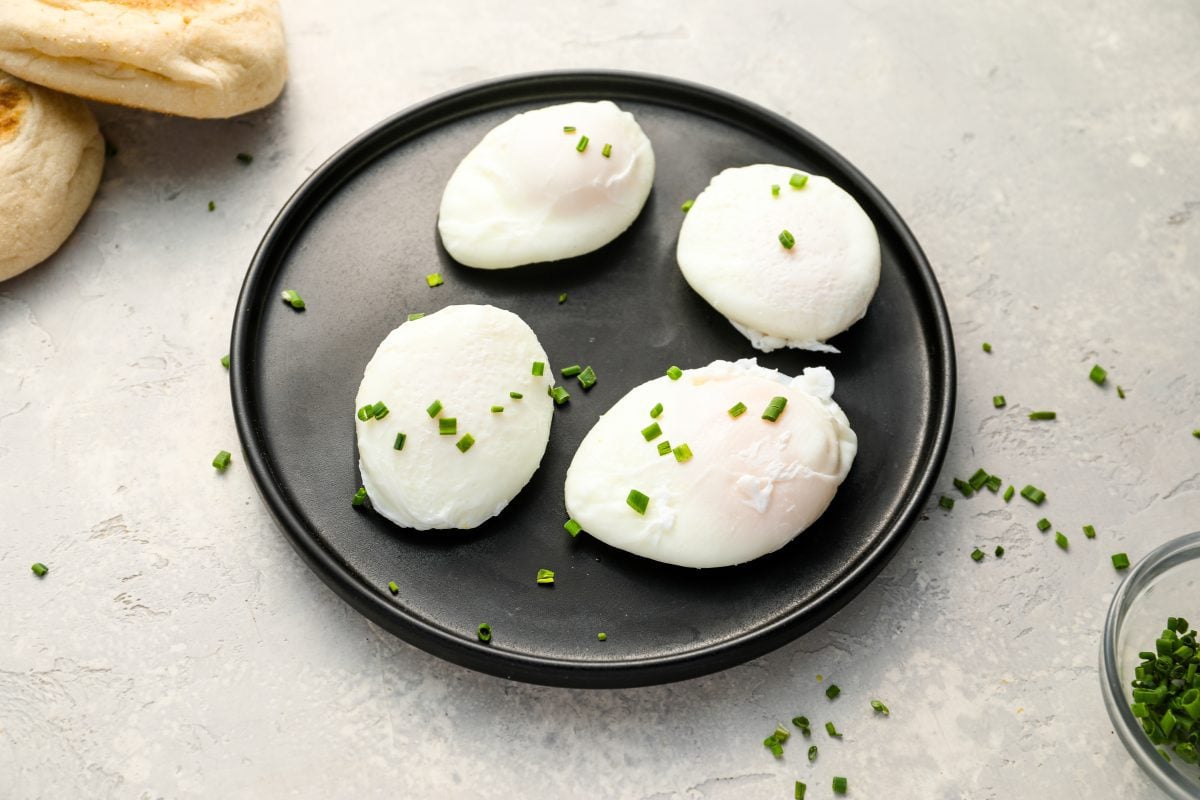
You May Also Like
Poached Eggs
Unlock the secret to perfectly poached eggs: tender, beautifully runny, and impeccably shaped—no messy edges, just perfection for every brunch occasion!
Ingredients
- 4 large fresh eggs
- 1 tablespoon distilled white vinegar
Instructions
- Fill a 3-quart saucepan with 6 cups of water. Add the vinegar to the water. Bring to a gentle simmer over medium heat. You should see bubbles coming to the surface, but it should not be at a rolling boil.
- One at a time, crack each egg into a fine mesh colander or sieve over a bowl or sink to remove the thin, watery part of the white, letting sit for at least 30 seconds (see note below explaining this step). Transfer the egg from the colander to a small cup or ramekin.
- One at a time, slide the eggs into the simmering water. Let cook for 3 to 4 minutes for soft yolks, or longer if you prefer firmer yolks. Avoid stirring the water while the eggs are cooking, as this can break them apart.
- Use a slotted spoon to carefully lift each egg out of the water as it is done. Let the eggs drain on a paper towel-lined plate to remove excess water. This step is crucial to ensure your poached eggs are not watery when served.
- Season the eggs with salt and pepper to taste, and serve them immediately on toast, as part of eggs Benedict, or with your preferred dish.
- Note: Straining removes the watery part of the egg white, which can spread in the simmering water and create wispy, uneven edges around the firmer part of the white. This results in a neater, more compact egg shape and a slightly better texture. However, if you don't mind the appearance of the eggs or are not concerned about achieving a perfectly rounded shape, you can skip this step to save time and effort. The taste and overall quality of the poached egg will still be good without straining; it's purely an aesthetic preference.
- Make-Ahead Instructions: Immediately after poaching the eggs, transfer them to a bowl of ice water. This stops the cooking process instantly and helps preserve their delicate texture. Once cooled, store the poached eggs in the ice water in the refrigerator for up to 24 hours. When ready to serve the eggs, reheat by bringing a pan of water to a gentle simmer—do not let it boil as high heat can cause the eggs to become rubbery or break apart. Using a slotted spoon, place the poached eggs in the simmering water for 30 seconds to 1 minute, just until they are warmed through. Carefully remove the eggs with the spoon, drain briefly on a paper towel-lined plate, and serve.
Nutrition Information
Powered by ![]()
- Serving size: 1 poached egg
- Calories: 71
- Fat: 5 g
- Saturated fat: 2 g
- Carbohydrates: 0 g
- Sugar: 0 g
- Fiber: 0 g
- Protein: 6 g
- Sodium: 71 mg
- Cholesterol: 186 mg
This website is written and produced for informational purposes only. I am not a certified nutritionist and the nutritional data on this site has not been evaluated or approved by a nutritionist or the Food and Drug Administration. Nutritional information is offered as a courtesy and should not be construed as a guarantee. The data is calculated through an online nutritional calculator, Edamam.com. Although I do my best to provide accurate nutritional information, these figures should be considered estimates only. Varying factors such as product types or brands purchased, natural fluctuations in fresh produce, and the way ingredients are processed change the effective nutritional information in any given recipe. Furthermore, different online calculators provide different results depending on their own nutrition fact sources and algorithms. To obtain the most accurate nutritional information in a given recipe, you should calculate the nutritional information with the actual ingredients used in your recipe, using your preferred nutrition calculator.
Gluten-Free Adaptable Note
To the best of my knowledge, all of the ingredients used in this recipe are gluten-free or widely available in gluten-free versions. There is hidden gluten in many foods; if you're following a gluten-free diet or cooking for someone with gluten allergies, always read the labels of your ingredients to verify that they are gluten-free.

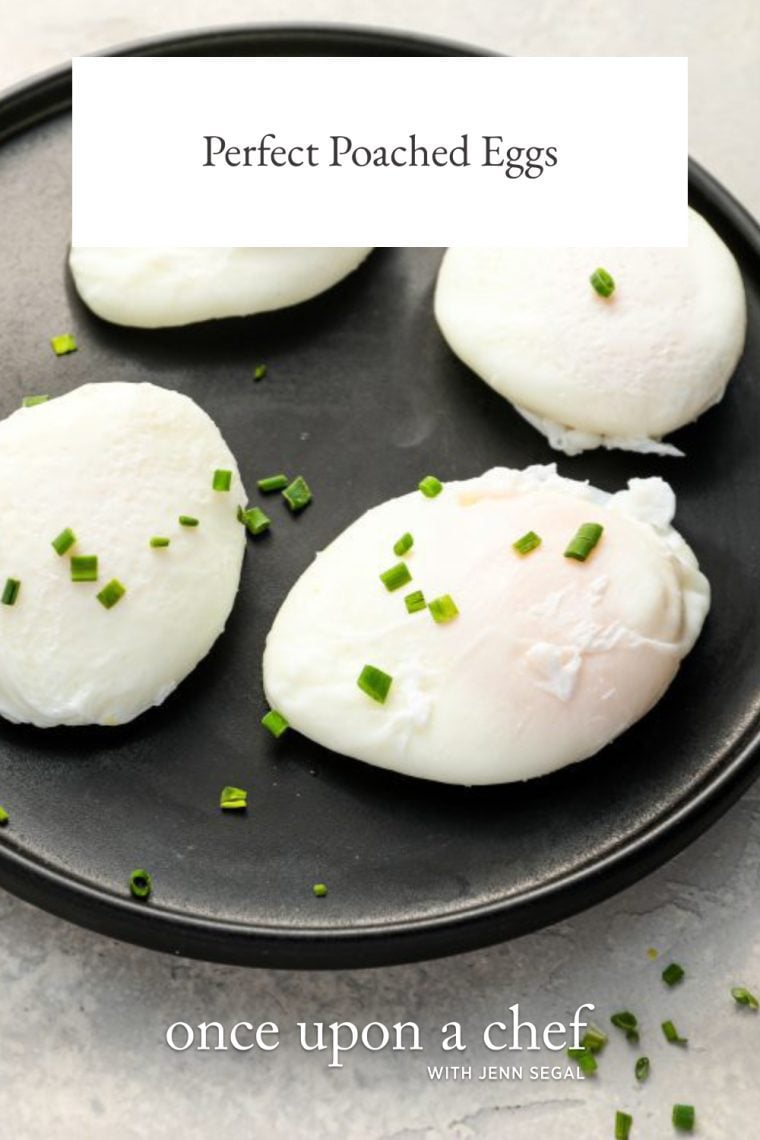

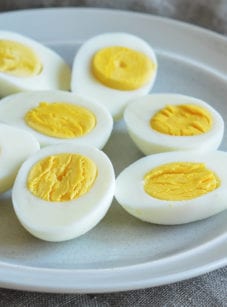
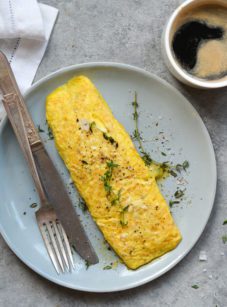

Thank you! This is the first time I’ve been able to consistently make poached eggs that look and taste good. I have used vinegar and stirring to make a vortex, but I think the advice to strain the eggs really made the difference.
Yes – at least in Safari on iOS (it may appear differently in other browsers or on other devices) – there is no amount given for the vinegar unless you scroll to the bottom and expand the question about whether the eggs will taste like vinegar.
Thanks so much for that feedback – I’m going to look further into it!
Thank you for a method that works. Made one modification. When I poured the first egg in I still got some of the whispy strands , so I used a method of where you pour the egg into a stainless steel ladle heat the ladle for a few seconds, in the water, then slowly turn eggs into the water. Absolutely perfect on the other eggs.
I don’t see an amount for the vinegar, how am I missing it?
Hi Mindy, you must’ve just overlooked it. You’ll need 1 tablespoon. Hope you enjoy!
I haven’t been able to made “Good Looking” poached eggs until I read you part on straining the eggs, they still weren’t to my approval, But I bought the small strainers at the dollar store, I spray them with Pam then strained the eggs for 1 minute and poached them “in”the strainer, use a small spatula to slide them out to a slice of toast. Perfect everytime. FYI
This is the first time I have seen this in print. Have been making poached eggs with your method for years. Totally fool proof. And they are so yummy and so pretty. I do use a lid and poach about half the time. Thank you.